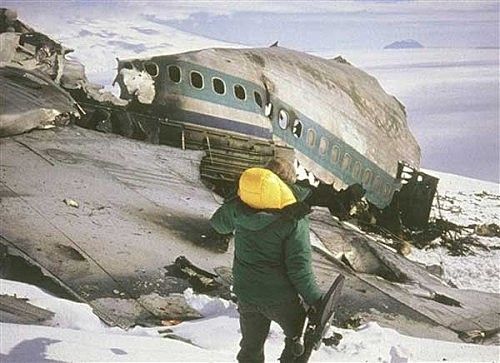Internet Histories | 19 May
This week on the internet: the interstellar archaeologists, terrifying existential threats that will kill you and everyone you've ever loved, and final conversations from the black boxes of history
This week on the internet:
The interstellar archaeologists
Terrifying existential threats that will kill you and everyone you've ever loved
Final conversations from the black boxes of history
Joe
If you haven’t read about Erich von Däniken, you’ve probably avoided the dustjacketed basement of certain suburban second-hand bookshops (non-fiction section about aliens + pyramids, easily mistaken for Wilbur Smith) and you’ll probably catch up at some stage via the curated magic of Cool Freaks’ Wikipedia Club. The dude is an extraordinary conman, a sort of Swiss L. Ron Hubbard who ditched the religious trappings and used a series of books about “paleo-contact” with extraterrestrials to pay his way out of penury.
He wasn’t the first to have speculated that ancient civilisations were influenced by visitors from another world (this is a polite way of saying he plagiarised other writers) but he popularized it for the purpose of a huge amount of science fiction. Tropes from his work crept into Stargate, Doctor Who, The X-Files, Prometheus, and more Z-grade level stuff beside.
Von Däniken’s theories have been lambasted for being under-researched (he had basic misunderstandings of how a lot of supposed alien artifacts were composed and erected), gullible (he once mistook stones with alien stick figures sold by a modern-day Peruvian potter to tourists for the real deal) and, well, racist (everyone outside Europe can’t have made remarkable things on their own and aliens obviously had to help them).
Paul Gilster’s beautiful and seriously edifying piece on Aeon is about what happens when archeologists look outward rather than downward for their proof of extraterrestrial life. Fittingly, it begins with a Von Däniken-like businessman who inadvertently ravaged Troy all over again in 1971 for trinkets for his wife. But it quickly gets mind-expanding.
Interstellar archaeologists are looking for evidence of engineering on scales that dwarf our own. They assume that civilisations eventually build technologies capable of exploiting the energy resources of entire stars…
The former Fermilab scientist Richard Carrigan, one of interstellar archaeology’s pioneers, has long been a vocal proponent of the hunt for Dyson spheres, a technology proposed by Freeman Dyson in 1960. Dyson predicted that energy-seeking civilisations would surround their home stars in a technological shell, or a swarm of spacecraft, in order to capture its energy. True to his word, Carrigan has conducted a series of searches for Dyson spheres…More recently, Berkeley’s well known exoplanet hunter Geoff Marcy began studying 1,000 Milky Way star systems for evidence of large structures, looking for visible disturbances in light levels around the parent star as the techno-structures transit between their star and the Earth.
Exoplanet hunter! And once it’s done blowing your mind a few times over (but staying practically and satisfyingly realistic about our chances of finding anything), the last paragraph is all kinds of Sagan-level, fist-pumping beautiful.
Matt
This January marked fifty years since Dr. Strangelove was released, Stanley Kubrick’s bleakly comic take on the perils and possibilities of nuclear annihilation. It’s easily my favourite Kubrick film, a hilarious masterpiece that somehow speaks as potently now as it did half a century ago, at a time when
America had become an obsessively anti-Communist national-security state. Twenty-four hours a day, at least a few bombers, fully loaded with nuclear weapons, were aloft, as a way of warding off a Soviet sneak attack. The strategist Herman Kahn, in a notorious book, “On Thermonuclear War,” published in 1960, insisted that a nuclear war was winnable, and that life would go on despite millions dead and nuclear radiation everywhere.
I think it remains an affecting vision because although the actors and the stage have changed, existential threats continue to haunt us – and, now, as then, we look at them, evaluate risk, and shrug. It makes for the same perfect barely-repressed hypocritical hysteria Kubrick’s film pointed to; Mutually Assured Destruction is still MAD, whether we’re talking about plutonium or poking holes in the ground and setting fire to what bubbles up. I’m speaking, of course, about this:
"A large sector of the West Antarctic ice sheet has gone into a state of irreversible retreat. It has passed the point of no return," says Eric Rignot, professor of Earth system science at the University of California Irvine. "The retreat of ice is unstoppable," he says, noting that surveys have shown there is no large hill at the back of these glaciers that could hold back the melting ice.
"This retreat will have major consequences for sea level rise worldwide," he adds, anticipating the melting will take place largely in the next two centuries. "It will raise sea level by 1.2 metres," says Rignot, whose paper has been accepted for publication in the peer-reviewed Geophysical Research Letters, a journal of the American Geophysical Union.
The mind-bending enormity of this fact affects me more profoundly than any number of op-eds about house prices or inflation or who won Eurovision, and it’d be real nice to think it’ll affect the outcome of some important G8 meeting real soon, but there’s a lot at stake. More than lives, obviously. Money. A lot of money.
Given the fluctuations of fuel prices, it’s a bit tricky to put an exact price tag on how much money all that unexcavated carbon would be worth, but one financial analyst puts the price at somewhere in the ballpark of $20 trillion. So in order to preserve a roughly habitable planet, we somehow need to convince or coerce the world’s most profitable corporations and the nations that partner with them to walk away from $20 trillion of wealth. Since all of these numbers are fairly complex estimates, let’s just say, for the sake of argument, that we’ve overestimated the total amount of carbon and attendant cost by a factor of 2. Let’s say that it’s just $10 trillion.
The last time in American history that some powerful set of interests relinquished its claim on $10 trillion of wealth was in 1865—and then only after four years and more than 600,000 lives lost in the bloodiest, most horrific war we’ve ever fought.
The article looks at the political and economic (rather than moral) dynamics at stake in forcing powerful interests to give up their industries – then (slavery), as now (resource wars, genocide, unimaginable poverty for billions), the stakes were high.
The world is a complicated place – I get it – but I would be OK with paying a few more dollars in tax and not treating corporations as if they were people in exchange for not be trapped in a coastal dome-city in my dotage, thanks.
Rosabel
If we ever do recover the wreckage of MH370 – or, at the very least, its black box – we'll be able to know for sure if it was hijacked, shot down, or the victim of a cockpit fire. There are few other processes that we’re able to subject to this level of scrutiny. In addition to all the flight data, we’ll have the final cockpit conversations, too, allowing an added nuance to our understanding of what went down.
Whether there’s real value in releasing those recordings to the public is debatable, though, and when the New York Times published excerpts from four crashes in 1996, they paradoxically prefaced it with the following warning:
Releasing the transcripts is a practice that irks many pilots. It is disrespectful to the pilots and their families, they say, and casual readers may not understand when pilots are relaxed as opposed to lax. Pilots are a team, and a bit of joking can improve the way they communicate.
Nevertheless, the transcripts can be immensely valuable in determining why accidents occurred.
In truth, there’s little to be gained from a layperson reading them aside from satisfying a grim and shamefully irresistible curiosity. Archived here, these recordings and their transcripts from the black boxes of history make for dark, eerie reading. There’s some of the panic you might expect in somebody’s final moments, but mostly there’s an unsettling, professional calm. Take New Zealand’s Mt Erebus disaster, a documentary of which is premiering at the Documentary Festival this Wednesday:
F/E Where’s Erebus in relation to us at the moment
MU Left, about 20 or 25 miles
F/O Yep, yep.
F/E I’m just thinking of any high ground in the area, that’s all.
M/U I think it’ll be left.
F/E Yes, I reckon about here.
MU Yes… no, no, I don’t really know.
MU That’s the edge.
CA Yes, OK. Probably see further anyway.
F/O It’s not too bad.
MU I reckon Bird’s through here and Ross Island’s there.
MU Erebus should be there.
CA Actually, these conditions don’t look very good at all, do they?
MU No they don’t.
Elsewhere:
If we talked about architecture like we talked about writing
Hollywood's Real Superhero Problem
The West Wing: an oral history
How to write
How should editors edit?
Being a newspaper editor at a shitty Thai daily during 9/11
Why octopuses don't tie themselves in knots




